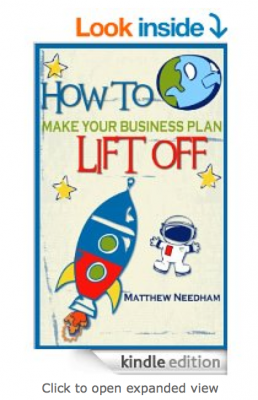Getting More Clients: Keeping Your Existing Customers Engaged

I obsess about getting more clients. Not because I necessarily need to get more clients myself, but because it’s the number one request I get from my own clients for advice to grow their businesses.
Fundamentally there are 3 ways to grow your business:
1) Sell more of your existing products
2) Create and sell new products
3) Get more clients and sell them your existing or new products
But most people tend to focus on getting new clients or customers and forget about their existing customers. This is a big mistake.
I was reminded of this when I read Yolanda Facio’s post over at Red Hot Momentum about “14 Ways to Keep Your Existing Customers Engaged and Buying”.
One of the suggestions Yolanda made to keep your customer engaged was to send “Thank you notes, handwritten, to new customers to thank them for becoming customers”. Great idea.
This idea struck a chord with me for two reasons; firstly because it was the exact same strategy that I’d recommended to one of my own clients the week before, but secondly when I received in the post something similar myself it struck me just how powerful, simple and low cost this idea is as a mechanism for building customer engagement.
A couple of weeks ago at about 8.30pm one of our Siamese cats became quite ill and my wife phoned our regular vet. A voice recording told us to dial another number to reach their emergency/out of hours service which turned out to be… out of service
(Action: Go and check your answer machine message right now, is it correct?).
Turning to Google, we found the number of a local out of hours vet and my wife then phoned them who told us to bring him in straight away.
(Action: is your website optimised for Local Search?)
Very sadly our cat was put to sleep that night, which was a big shock to the whole family, especially for my wife as she’d had him for 16 years. He was 17 years old and 1 day.
###
A few days later, my wife and I received a card in the post (the one in the picture at the top of this post) from the vet, signed by all the staff with handwritten messages of condolence. But what struck me most about the card was not that they’d sent the card in the first place, (which was a total surprise) but the fact that the messages were so incredibly specific; talking about how beautiful a cat he was (which he was) and one member of staff noted that the loss of a pet is like losing a dear friend.
To some extent receiving the card was quite upsetting, bringing back the memory of him being put to sleep, but also we were both struck with how powerful a connection it made between us and the veterinary practice we’d only used that once, but would be sure to use again for our other cat.
Clearly a lot of thought has gone into engaging with customers at this Veterinary Surgery, which effectively runs the out of ours service on behalf of a national pet welfare charity.
On the face of it, a pet dying in whatever circumstances is the loss of an income stream to a vet. So commercially, there’s no real reason to do it.
But that ignores the emotional connection that people have with their pets, based on caring for them on a daily basis over a long time and with them being part of the family.
So engaging with customers whether or not they have a pet or not takes a sensible long view. Customers who decide not to have another pet will undoubtedly tell others (as indeed we have) and customers who decide to get a new pet are not likely to think for very long about where their pet is going to be treated? are they!
The point is that engagement with that’s a “thank you” or some other personal message can happen at any time in the customer life cycle.
There’s several very important lessons that I have taken away from this story and you can too:
1. Timing
Sending a personal note at the time of the activity looks a little process driven. If we’d recieved a card the next day we would have thought far less of it, I’m sure. So getting the time right. Not too close as it’s intrusive but not to far away to make it look an afterthought.
2. Personalisation
The card we received was a high quality printed card highly relevant to our circumstances (ie it had a cat on the front – presumably if you had a dog, and it had died, then they’d send you a card with a dog on the front).
Secondly, it wasn’t just signed by the staff. The card was signed by far more people that I met that night, with a number of very personal and specific messages. Such as using our cat’s name and talking about a small fact about him which is so very important when creating a connection.
In a world where personal communication has all but stopped, other than bills, getting a handwritten envelope and card makes you really take notice.
3. Systemise the process
Over the years, whenever I’ve been to a vet I’ve always been struck with how chaotic the scene is, more so than a doctors surgery, because of the different types of animals and the “unpredictable” nature of some of the animals to each other. So amongst all this chaos, some sense of order needs to prevail and that’s where systems come in. You can’t leave processes to chance. Especially not customer engagement. Whether that’s designing and buying the cards, keeping track of when/where it is signed and sending it a few days later are all areas which could go awry. So it’s important that however you decide to build engagement, that you document the process and build it into your daily business routines.
4. Training/Communication
In a busy organisation it’s difficult to make time for things, so explaining the importance of carrying out the task and how to empathise with your customers is extremely important in creating that connection. One that should never be overlooked.








Excellent post! And yes, isn’t it amazing how much a handwritten thank you note can change your entire day! I keep a running list of people I want to thank, no matter how small the gesture. And I keep thank you notes on my desk so that it’s easy to stop, take a minute or two to jot down my thoughts and send it. I enjoy the process, I actually feel good knowing that the person I’m sending the note to is going to get a nice little surprise in the mail!
Thanks for the mention and I’m so glad this great post was a restult of it!